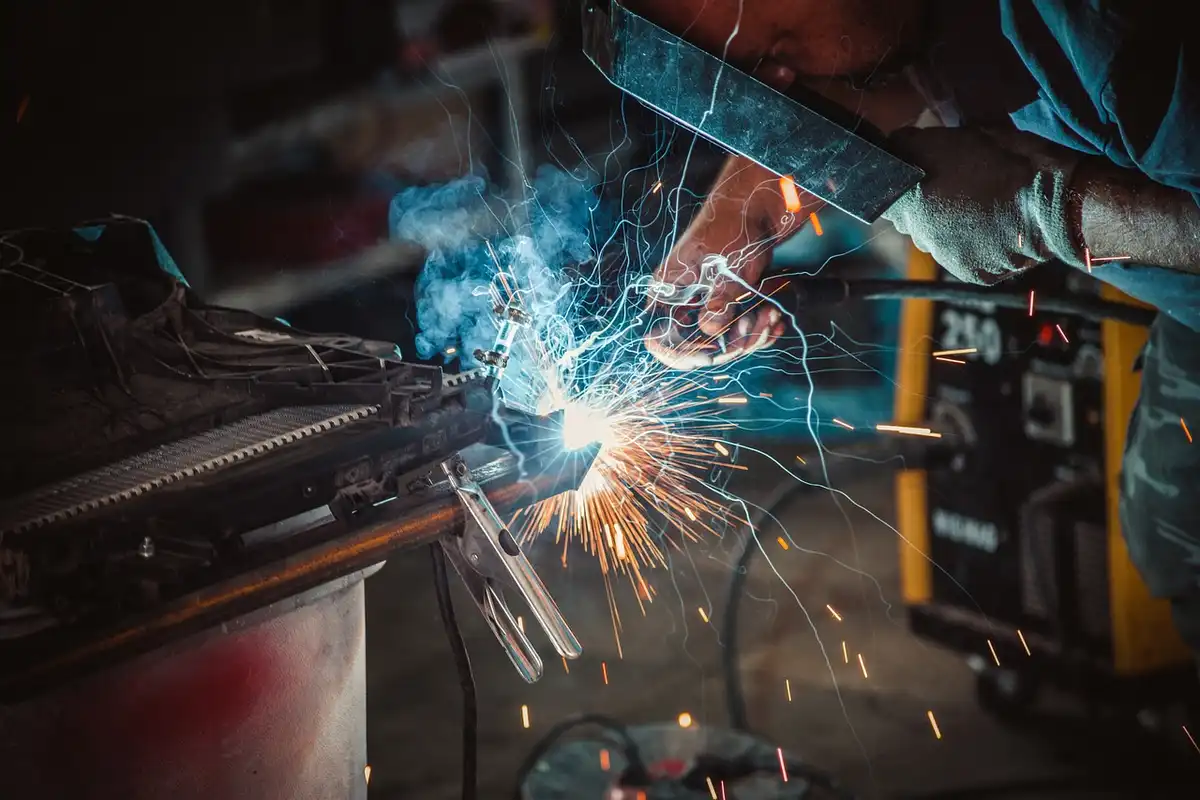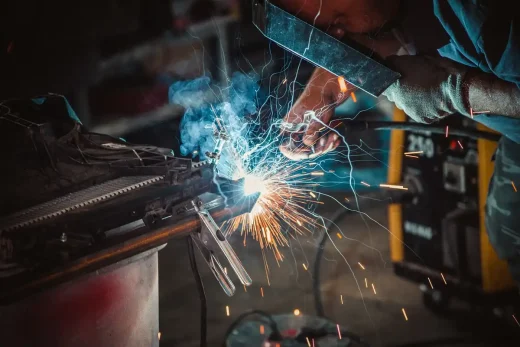Trusted MIG Welding Advice, Safety Gear Tips, Power Tools Guide
MIG Welding: The Basics for Mild Steel
MIG Welding – Joining Base Materials
The use of a welding gun to continuously feed a solid wire electrode into the weld pool is called MIG welding. This welding process is usually used to join two base materials together. It makes use of characteristic shielding gas to protect the weld pool from contamination. The name MIG is the acronym for Metal Inert gas. Other names people call it are wire welding because it uses a wire and gas metal arc welding.
MIG welding allows the fabrication of many types of materials thickness from a 24-gauge thick material to a ½ inch thick material. Many people from all works of life like farmers, ranchers, and motorsports can use MIG welding for a lot of welding needs. The reason most people move to this system is that it is a very easy process to learn – most people even attribute the process to been as easy as using a glue gun.
Safety of MIG Welding
Safety is of paramount interest when it comes to undertaking any welding process without which you stand the risk of exposing your body to serious physical damage. The basic welding safety materials include the use of safety boots and shoes, hand gloves, full-length pants, a welding helmet, safety Googles or glasses, and a skull cap to prevent or protect the head form occasional sparks.
Power Tools Geek offers a wide range of safety gear and MIG welding equipment that is tailored to every need. You will do well go check them out for the most competitive prices in the welding industry.
How to MIG weld
Preparing the Metal
The solid wires use by the MIG welding equipment does not rust; either does it accumulate contaminants easily. Before making an arc though, use a metal brush to clean down the bare metal and make sure the working clamp connects to the clean metal before you start. If the metal you want to weld is very thick, all you have to do is secure the bevel joints on the pavement to allow for a more thorough penetration of the base metal.
Prepare the Equipment
Cables: Check the cables to see to it that all connections are tight-fitting and there is no loose end that may jeopardize the whole welding process.
Select Polarity of the electrode: The welding equipment requires that the DC electrode is positive on in reverse polarity. Check the user manual for directions if you are confused about this.
Set the gas Flow: to do this, you need to turn on the shielding gas to between 20 – 25 cubic feet per hour. Use a soapy water solution to check for leaks in the gas pipe or hose if you suspect that gas leakages are happening.
Tension: Inspect the tensions on the drive rolls to ensure that they aren’t too tight or too loose.
Inspect the consumables and the contact tubes by removing spatter form them.
The two most common types of wires used for the steel include the ER70S-3 for an all-purpose welding or the ER70S-6 wire used on rusty or dirty steel surfaces. In respect to the type of gas used, MIG welding makes use of a blend of argon and carbon in 75 and 25 percent respectively. This blend of gas produces the least amount of spatter and won’t burn-through thin metals.
MIG Welding Techniques
MIG welding techniques make use of either a push or pull system. The forehand technique or the push technique requires that you move the gun away from the weld puddle. This system provides a lower penetration force because the arc is forced away from the puddle. You are using the pull or drag back technique if you point the gun at the puddle an drag it away from the base metal . The deeper penetration of dragging is a characteristic feature of this system.
Other terminologies you need to be familiar with are, the working angle that is the position of the gun relative to the welding joint, the travel angle that defines the distance between the gun and the perpendicular position. Flat positions are either in butt weld T-joint or lap joint. They define the working positions of MIG welding. You may also want to pay special consideration to horizontal welding positions, vertical welding positions, and overhead welding positions. Understanding how to weld with these positions will take some practice that will make you better at it.
Comments on this guide to MIG Welding: The Basics for Mild Steel advice article are welcome.
Scottish Architecture
Contemporary Lothian Buildings
Charlotte Square Edinburgh New Town Square

image courtesy of article provider
Comments / photos for the MIG Welding: The Basics for Mild Steel page welcome





